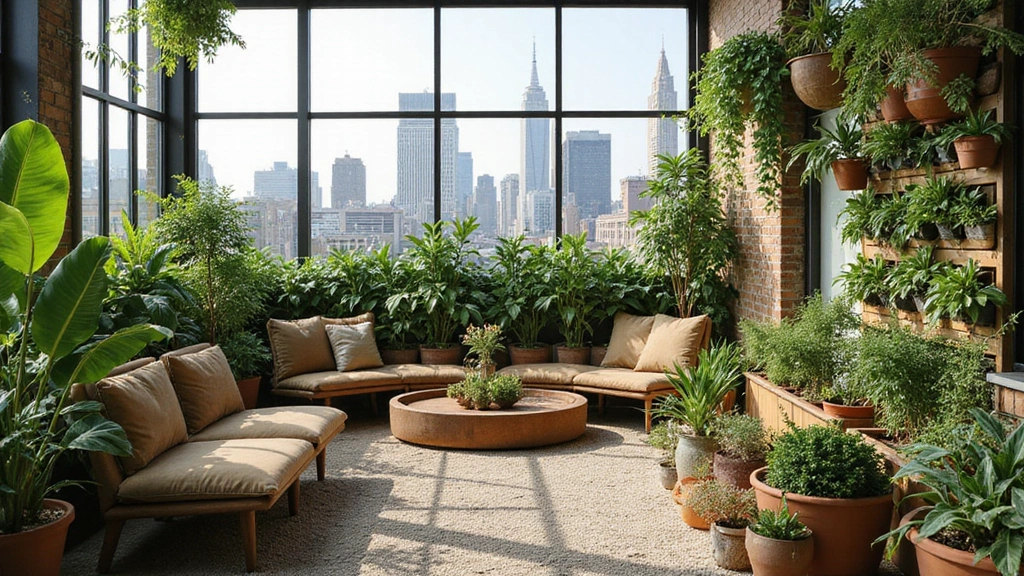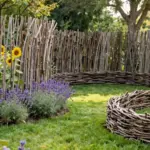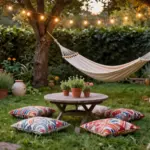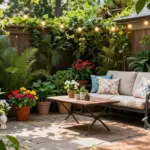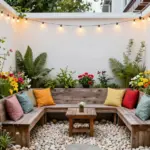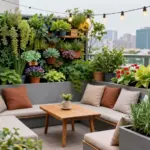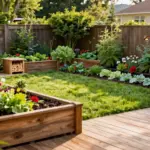Spring is the perfect time to revitalize your outdoor space, especially if you’re living in a small urban garden.
With limited space, every inch counts, and it’s essential to combine beauty with sustainability.
This listicle showcases 30 creative and eco-friendly outdoor plant decor ideas that will not only beautify your garden but also make it a functional oasis.
Let’s dive into the world of plant styling tips and garden design ideas that can transform your outdoor living space into a lush retreat, even in the hustle and bustle of city life.
1. Vertical Gardens: Go Up!
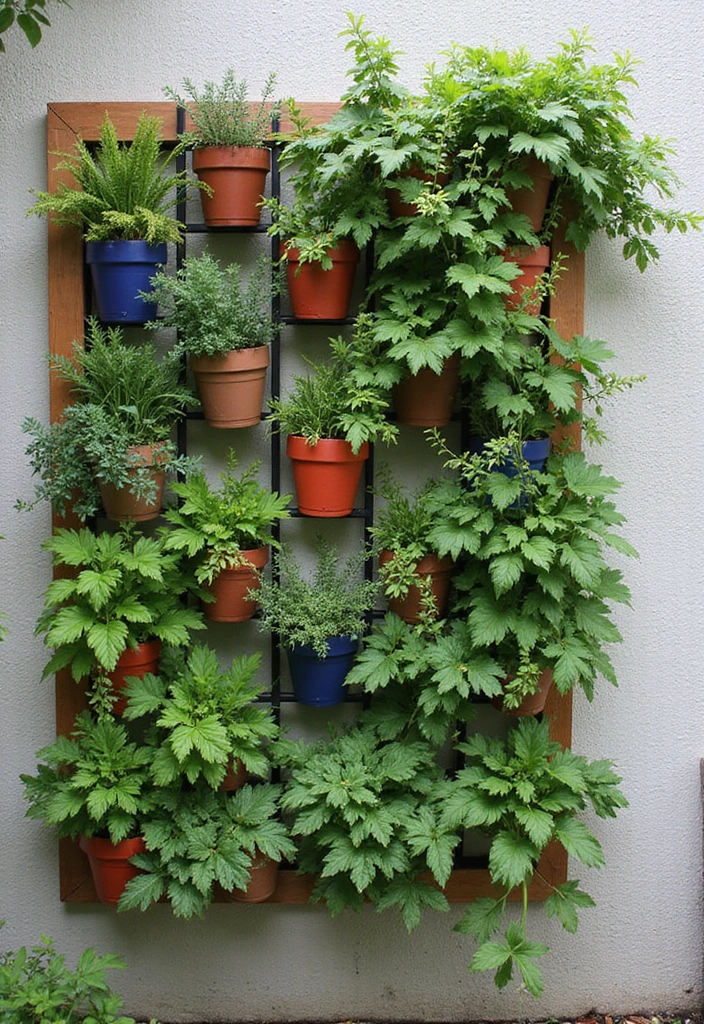
When space is at a premium, vertical gardens are your best friend.
Think of trellises covered with climbing plants or wall-mounted planters that allow you to layer your greenery vertically.
These installations not only save ground space but also add a stunning visual effect.
Some plants that thrive in vertical gardens include string of hearts, pothos, and even herbs like basil or mint.
For an added touch, use colorful pots made from recycled materials to emphasize your commitment to sustainability.
Here are some tips to get the most out of your vertical garden:
– Choose plants that are lightweight and easy to maintain.
– Position the garden where it can receive enough sunlight.
– Incorporate drip irrigation to ensure consistent watering.
Vertical gardens can truly be a statement piece, bringing life to any dull city wall.
2. Recycled Planters: Eco-Friendly Flair
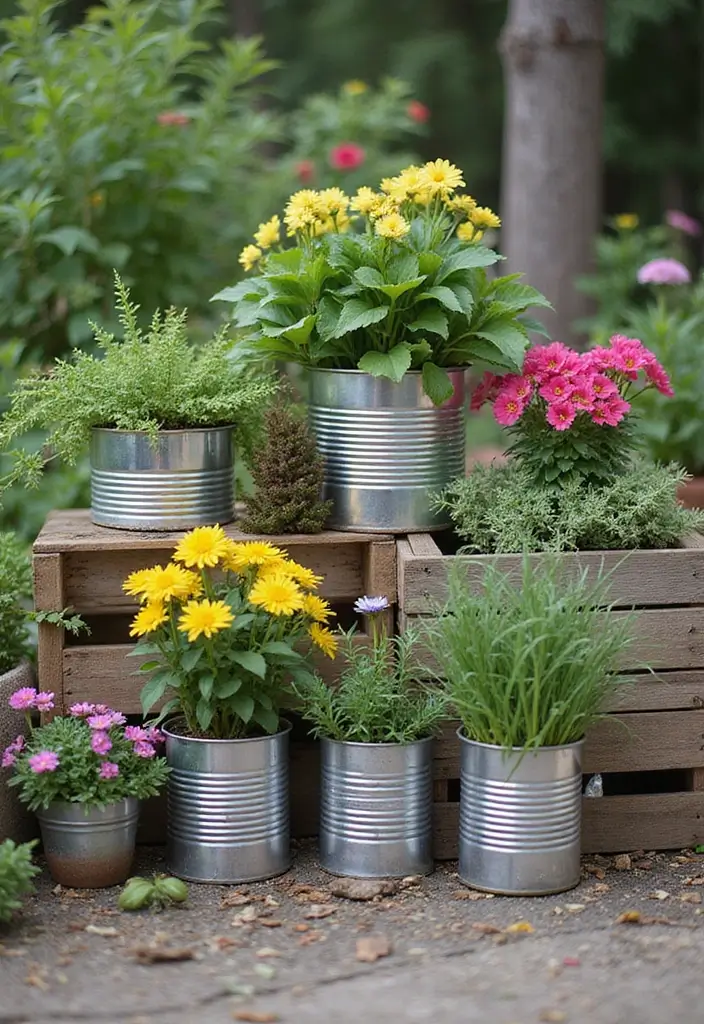
Using recycled materials as planters is a brilliant way to reduce waste while adding flair to your garden.
Old wooden crates, tin cans, and even broken ceramics can be transformed into charming planters.
Not only does this give your plants a unique home, but it also showcases your creativity.
To make these recycled planters even more appealing, consider painting them with non-toxic paints or adding decorative labels.
– Be sure to drill drainage holes for proper water flow.
– Use a variety of sizes for visual interest.
– Consider grouping planters of similar materials for a cohesive look.
This sustainable approach to decor allows you to express yourself while being kind to the planet.
3. Hanging Gardens: Sky High Beauty
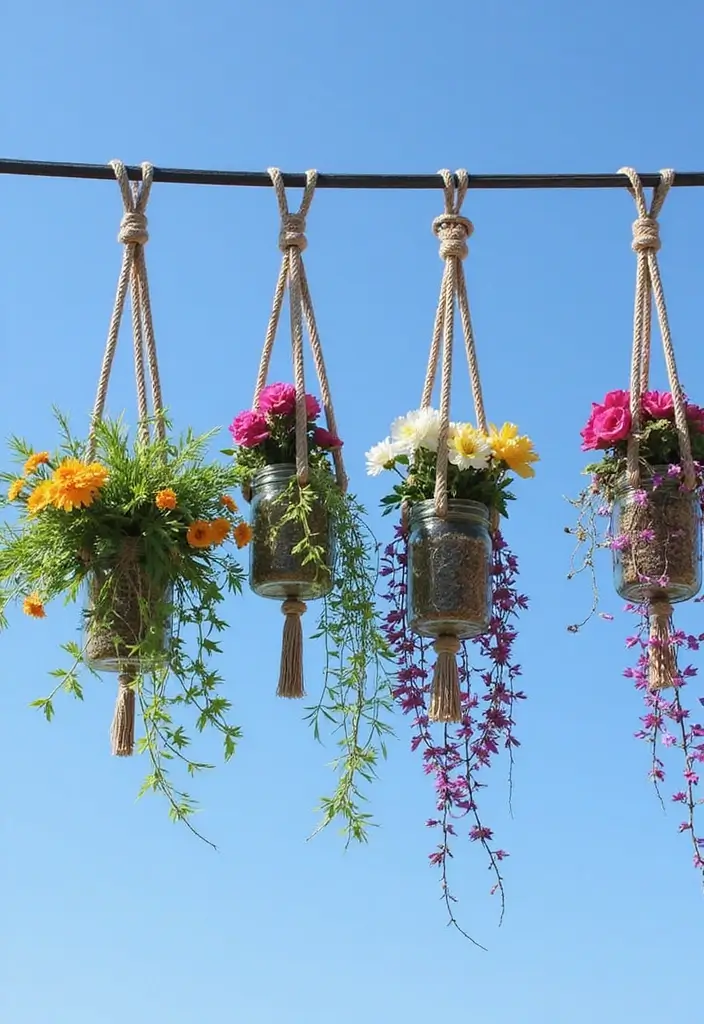
Why not take your garden to new heights with hanging planters?
These can be made from repurposed items like mason jars, old baskets, or even stylish macramé hangers.
Hanging gardens not only save floor space but also create an eye-catching display.
You can plant cascading flowers like petunias or trailing vines to add layers of texture and color.
– Consider mixing different types of plants for a diverse look.
– Ensure they’re hung at varying heights for a more dynamic appearance.
– Regularly check their water needs, as hanging planters can dry out faster.
Hanging gardens can be a playful yet sophisticated addition to your outdoor space, creating a serene ambiance.
4. Garden Art: Showcase Your Style
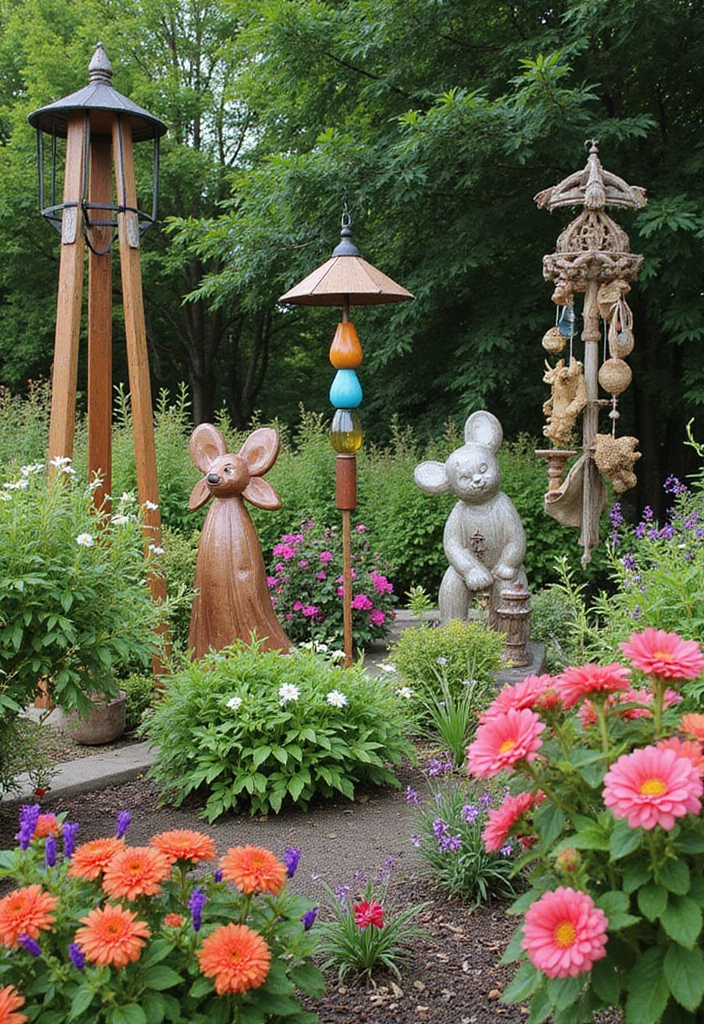
Incorporating art into your garden can elevate its overall aesthetic.
Look for sculptures, wind chimes, or even handmade mosaic stepping stones that reflect your personality.
Art can be a conversation starter and can set the mood of your outdoor living space.
You can even DIY your garden art using eco-friendly materials.
– Consider using natural stones for a rustic feel.
– Recycled glass can create stunning, colorful accents.
– Choose art that complements the plants around it.
Adding these elements can make your garden feel like an extension of your home, providing a joyful escape.
5. Edible Landscapes: Delicious Decor

Why not blend beauty with utility? Edible landscapes turn your garden into a feast for the eyes and the palate.
Incorporate herbs, vegetables, and fruit-bearing plants alongside ornamental flowers.
Plants like kale or Swiss chard can be as beautiful as they are practical, creating a vibrant and lush environment.
– Prioritize companion planting for improved growth.
– Use decorative pots or raised beds to add dimension.
– Regularly harvest to keep your plants thriving.
This approach not only enhances your garden’s decor but also provides fresh ingredients for your kitchen. Nothing beats the pride of harvesting your own produce.
Transform your garden into a feast for the eyes and palate! With edible landscapes, every plant serves a purpose, proving that beauty and utility can thrive together.
6. Pathway Designs: Guiding the Way
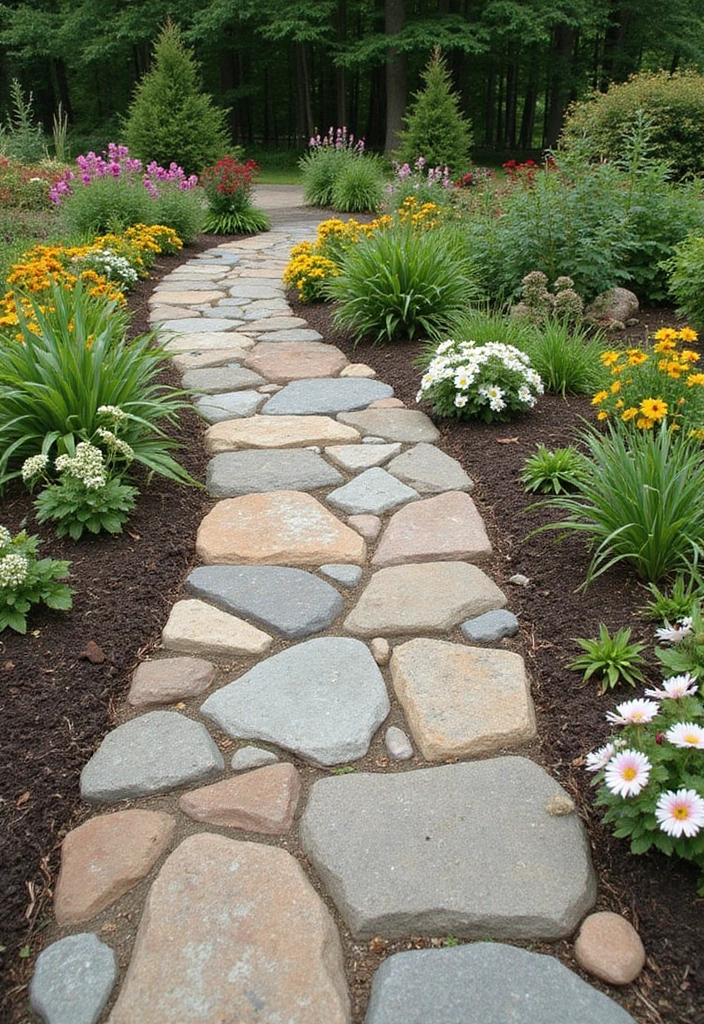
Creating clear pathways in your garden not only organizes your space but also adds charm.
Use natural stones, gravel, or reclaimed materials to design meandering paths that invite you to explore.
You can frame these paths with low-growing plants or colorful flowers for added visual interest.
for creating stunning garden pathways include:
– Choose materials that complement your garden theme.
– Keep them wide enough for ease of movement.
– Add lighting for an enchanting evening effect.
Well-designed pathways can transform a mundane garden layout into an inviting journey of discovery.
A well-placed pathway can turn your garden into an enchanting escape. Use natural materials and vibrant blooms to guide the way and invite exploration in your outdoor oasis!
7. Upcycled Furniture: Salvaged Charm
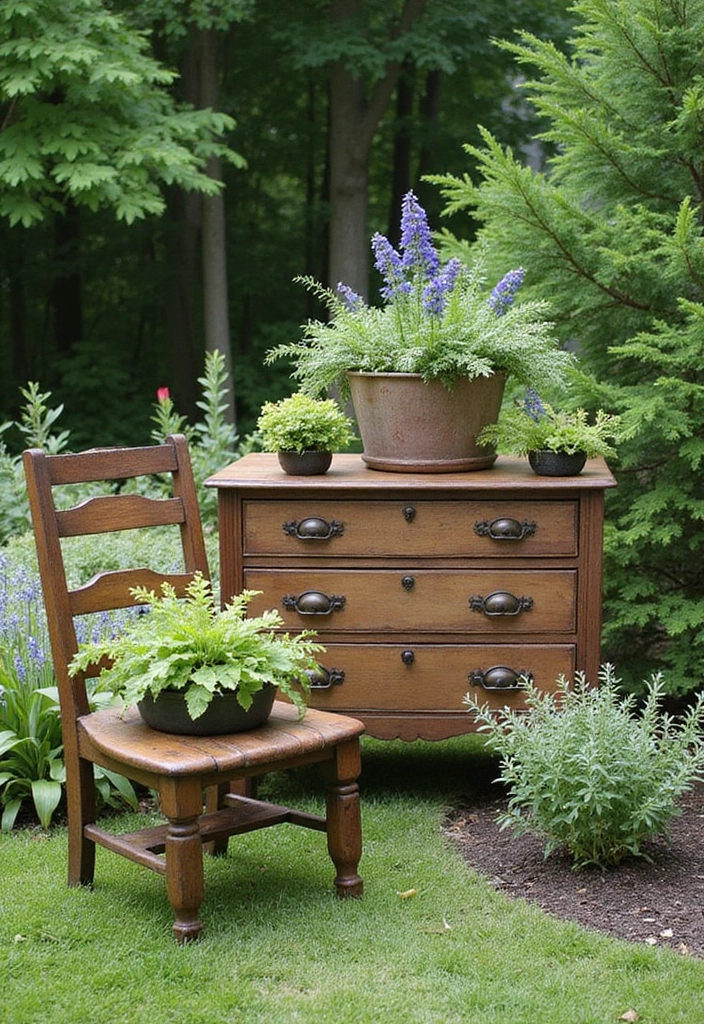
Transforming old furniture into garden decor is a fantastic way to give new life to discarded items.
Old chairs, tables, or even dressers can become whimsical plant displays or unique seating areas.
Imagine a vintage chair with potted flowers on the seat or an old dresser turned into a rustic potting station.
– Refurbish furniture with weather-resistant paint to prolong its life.
– Group pieces together for an eclectic look.
– Use cushions made from outdoor fabric for comfort.
This sustainable decor method not only enhances your outdoor living space but also tells a story of creativity and resourcefulness.
8. Colorful Pots: Vibrant Statements
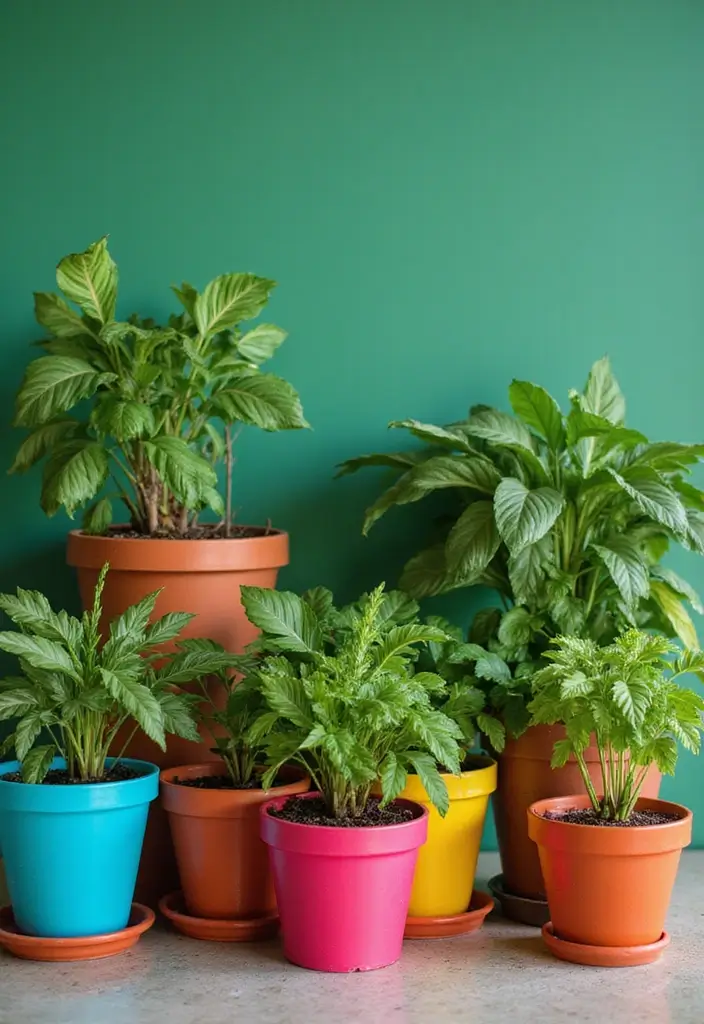
Planting in colorful pots can elevate the overall aesthetic of your garden.
Choose pots in bold colors or interesting patterns to create a fun and lively atmosphere.
Mix sizes and shapes for an eclectic feel or create a coordinated theme for a more harmonious look.
– Use pots made from eco-friendly materials whenever possible.
– Group similar colors together for a striking effect.
– Don’t shy away from unconventional shapes; they can spark joy!
Brightly colored pots can add personality and warmth to your outdoor space, making it a lively retreat.
9. Zen Gardens: Peaceful Retreats
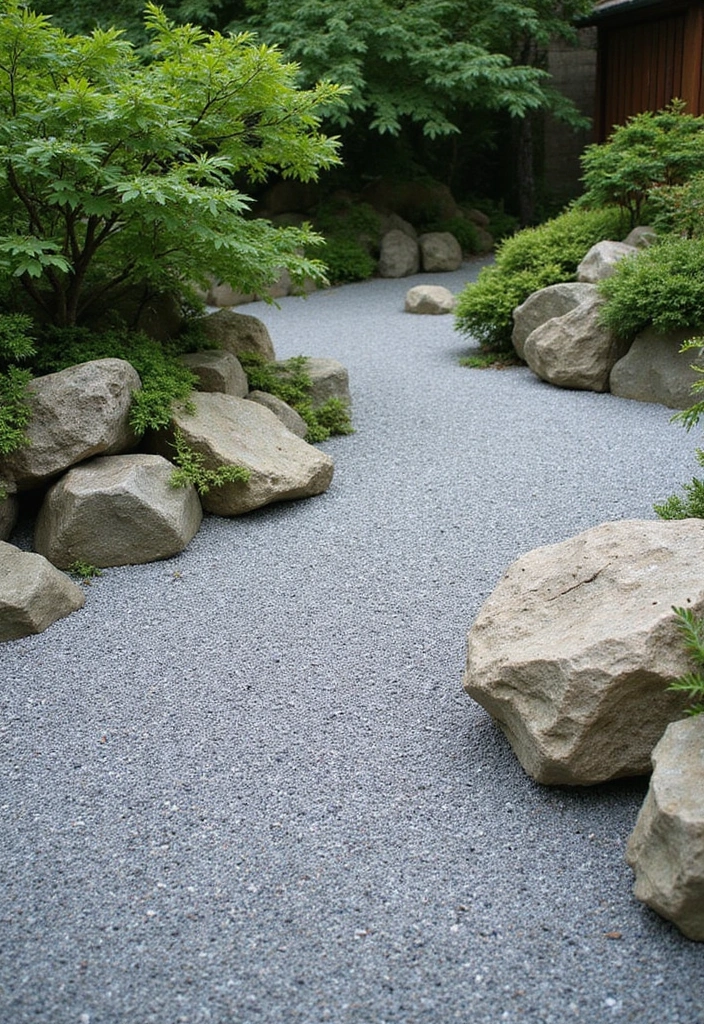
Creating a Zen garden is a wonderful way to establish a peaceful retreat in your urban space.
These gardens usually incorporate sand or gravel, carefully raked to create soothing patterns, paired with rocks and minimalistic plants.
Consider adding a small water feature or stone lanterns to enhance tranquility.
– Use drought-resistant plants for easy maintenance.
– Keep the design simple to evoke calm.
– Incorporate a seating area for meditation or relaxation.
Zen gardens can serve as a serene escape from the chaotic city life, inviting mindfulness and relaxation.
10. Fairy Lights: Magical Ambiance
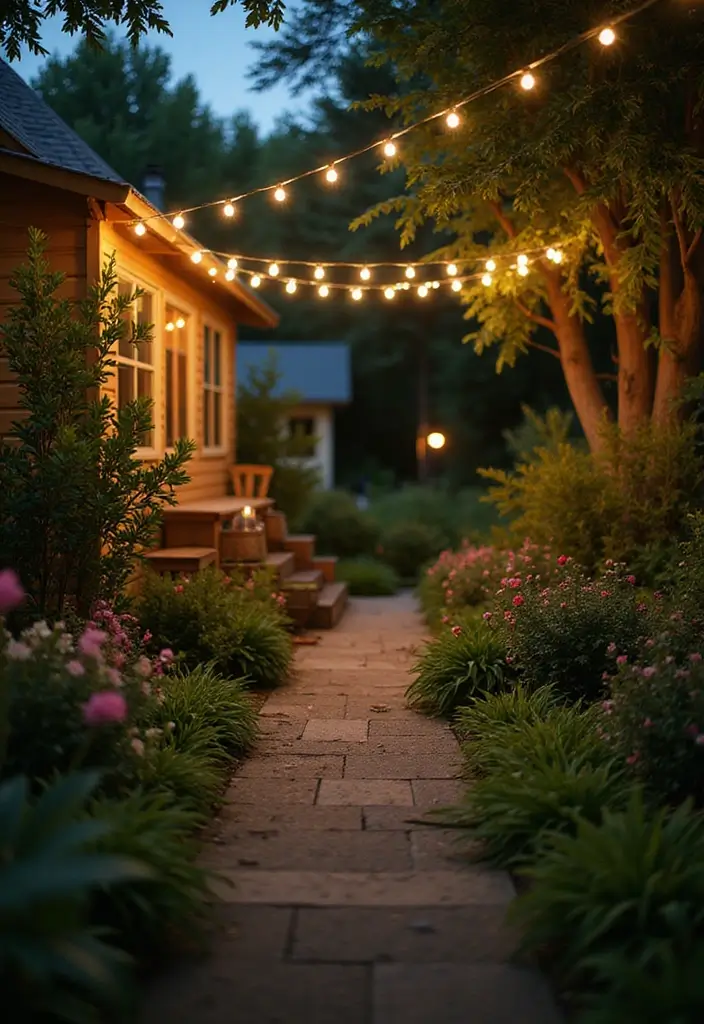
Don’t underestimate the power of lighting! Stringing fairy lights or lanterns can instantly create a cozy and inviting atmosphere.
Drape them over fences, around trees, or along pathways for a whimsical glow during the evenings.
You can also use solar-powered lights for an eco-friendly option that won’t add to your energy bill.
– Aim for warm white lights to create a soft ambiance.
– Incorporate different light sources for depth.
– Consider waterproof options for durability.
With the right lighting, your garden can transform into a magical retreat once the sun sets.
11. Natural Barriers: Living Fences
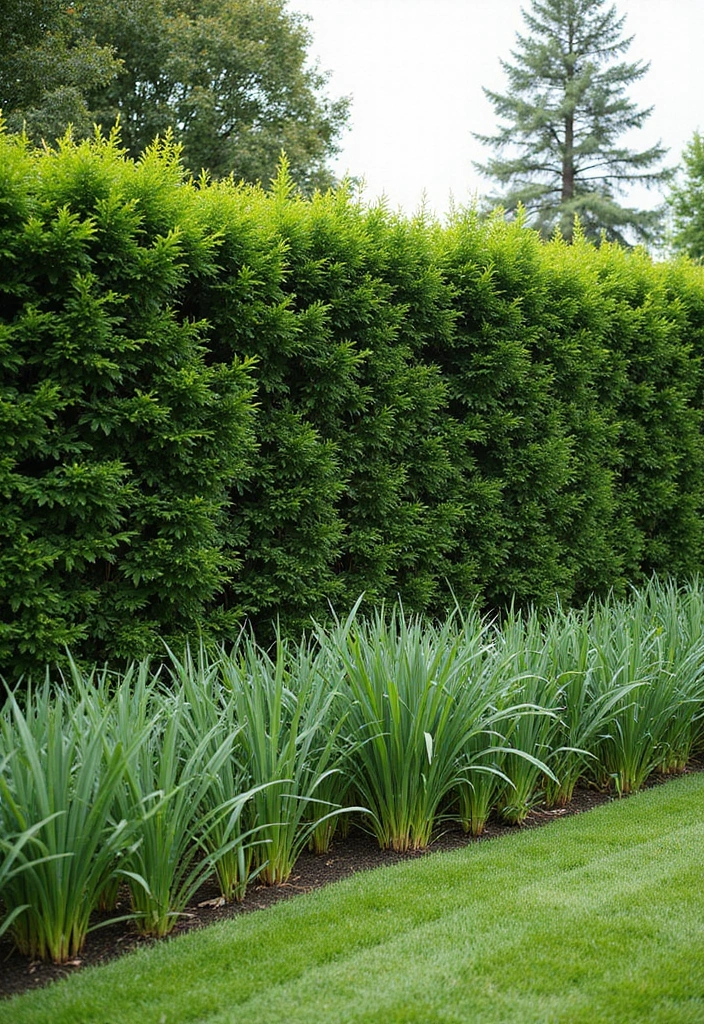
Using plants as natural barriers is both practical and beautiful.
Consider using dense shrubs or tall grasses as living fences to delineate spaces while providing privacy.
Plants like bamboo or climbing ivy can grow quickly and add greenery effortlessly.
– Be sure to choose non-invasive species to avoid potential problems.
– Use a mix of textures and heights for visual interest.
– Incorporate a pathway for easy access.
Natural barriers can enhance your garden’s charm while creating a sense of enclosure, making it feel more intimate.
12. Terrariums: Miniature Gardens

Terrariums are a delightful way to bring a bit of nature indoors while also serving as unique decor.
These miniature gardens can be made with glass containers, pebbles, soil, and small plants like succulents or air plants.
They’re low-maintenance and can be displayed on tabletops, windowsills, or even hung from ceilings.
– Ensure proper drainage to prevent overwatering.
– Use a variety of textures and colors for visual appeal.
– Consider themes, such as beach or forest vibes.
Creating terrariums adds a whimsical touch to your garden decor while allowing you to showcase your creativity.
13. Seasonal Displays: Celebrate the Times

Switching out plants according to the seasons can keep your garden feeling fresh and exciting.
Incorporate seasonal flowers, pumpkins for fall, or holiday decorations in winter to celebrate each time of year.
Use colorful pots and creative arrangements to draw attention to these seasonal changes.
– Plan ahead so you can maintain a cohesive look.
– Use hardy plants that can withstand seasonal changes.
– Embrace local traditions to add cultural significance.
Seasonal displays not only keep your garden lively but also invite joy as the year progresses.
14. Wildlife Gardens: Embrace Nature
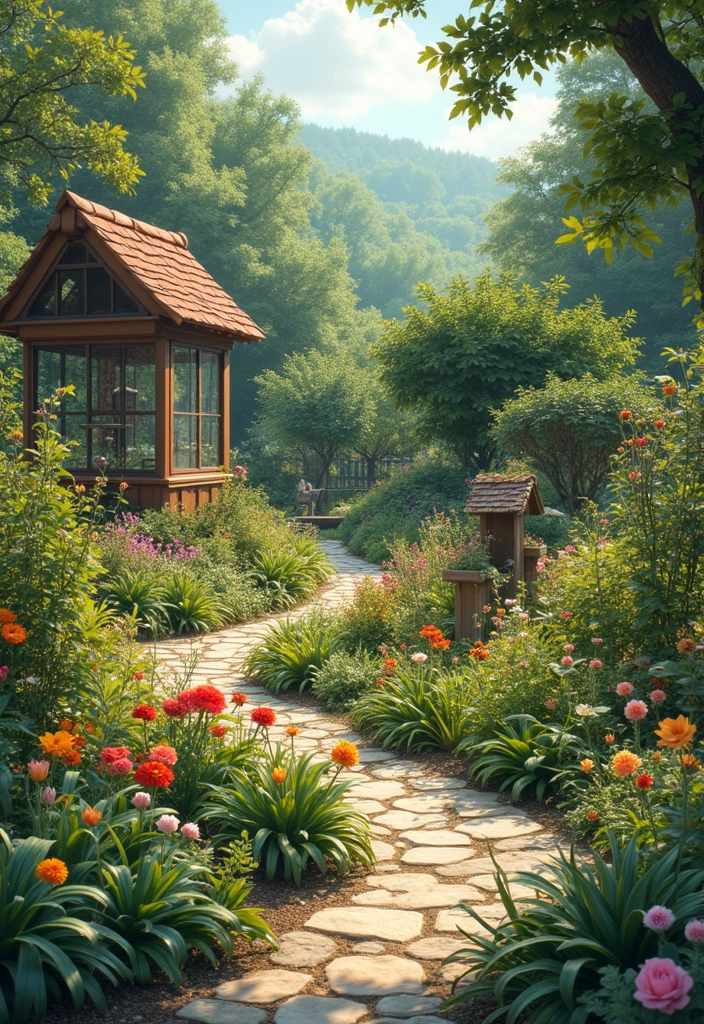
Turning your garden into a habitat for local wildlife can enhance biodiversity while creating a lovely environment.
Consider planting native species that attract pollinators like bees and butterflies, and provide shelters for birds and small animals.
Integrating bird feeders or baths can create a lively atmosphere, filled with the sights and sounds of nature.
– Native plants require less water and maintenance.
– Incorporate logs or stones for natural habitats.
– Avoid pesticides for a healthier ecosystem.
A wildlife-friendly garden celebrates nature and helps protect local ecosystems.
15. Rustic Aesthetics: Natural Textures
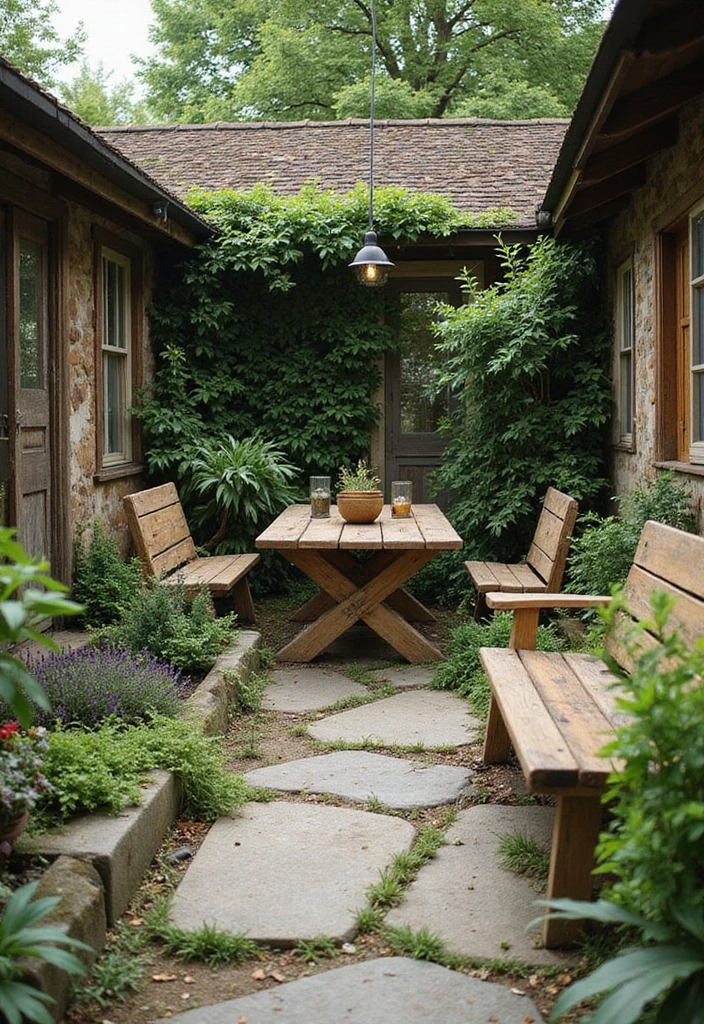
Rustic garden decor focuses on natural materials and textures that blend beautifully with the outdoors.
Think wooden benches, stone pathways, and metal accents that provide a warm, inviting feel.
This style emphasizes simplicity and authenticity, making use of materials that show wear and age.
– Incorporate reclaimed wood for planters or seating.
– Use natural stones for pathways and borders.
– Blend in plants that complement the rustic vibe.
Rustic aesthetics can create a cozy, welcoming environment that feels grounded and organic.
16. Flower Boxes: Window to Nature
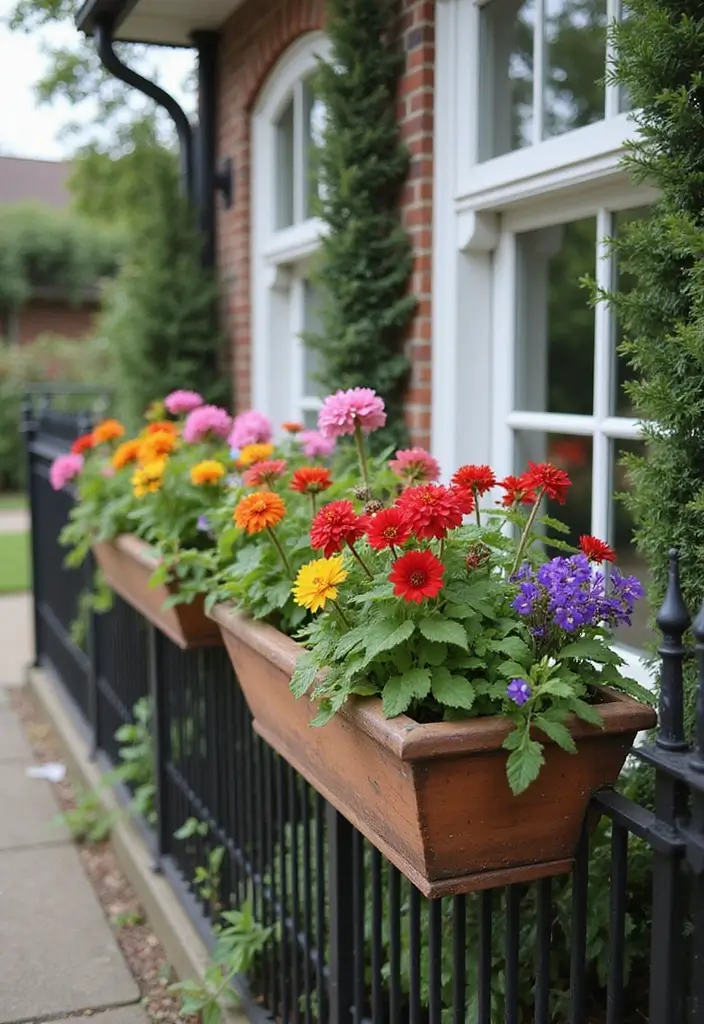
Flower boxes can enhance the exterior of your home while bringing life to vertical spaces.
Install them on windowsills, balconies, or fences, and fill them with vibrant blooming plants such as petunias, geraniums, or even herbs.
They can be made from reclaimed wood, metal, or even plastic for a more modern look.
– Ensure proper drainage to keep plants healthy.
– Mix colors and types for a vibrant display.
– Use flower boxes to frame outdoor spaces and draw the eye.
Flower boxes can serve as a beautiful introduction to your garden and create a welcoming atmosphere.
17. Garden Bench: A Cozy Spot
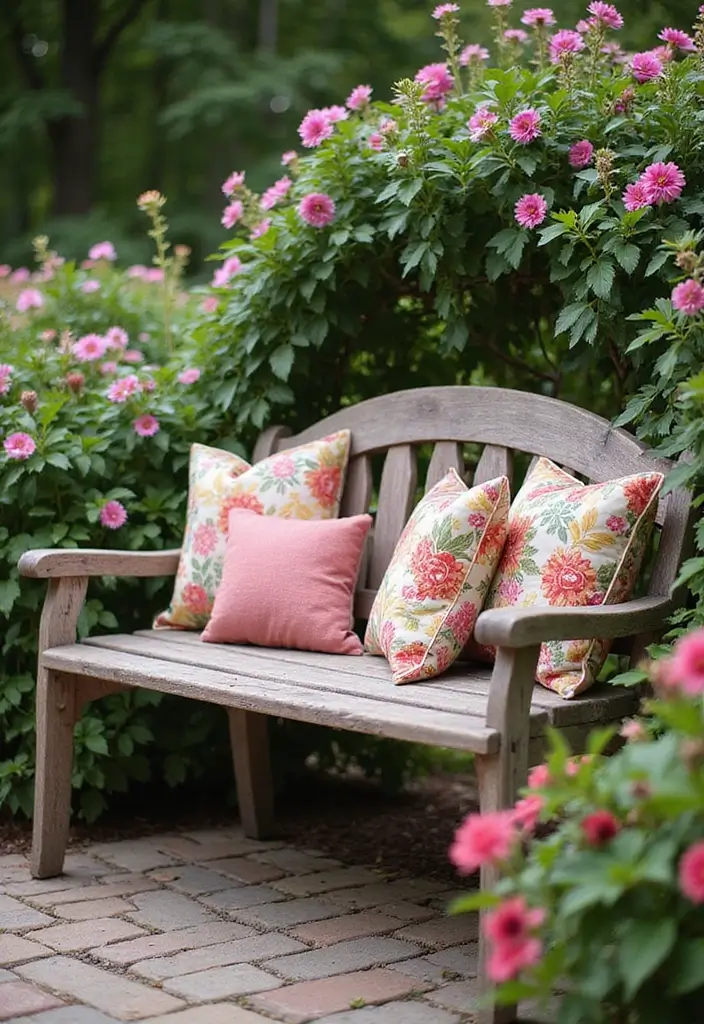
Including a garden bench is a perfect way to create a cozy nook for relaxation.
Choose a bench made from weather-resistant materials that can withstand the elements while complementing your garden’s style.
Add colorful cushions or throws for comfort and a pop of color.
– Position the bench near blooming flowers or under a tree for shade.
– Incorporate nearby pots to enhance the surrounding area.
– Use materials like reclaimed wood for a sustainable choice.
A garden bench offers a peaceful retreat, inviting you to pause and enjoy your outdoor sanctuary.
18. Aromatic Gardens: Scents of Bliss
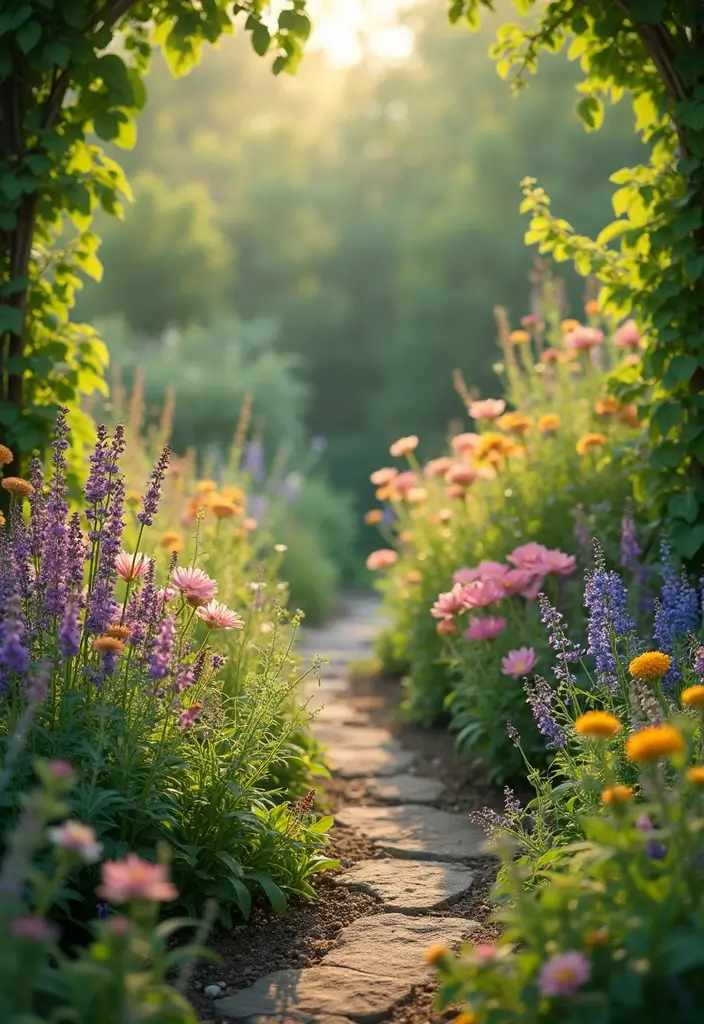
Creating an aromatic garden can be a sensory delight that enriches your outdoor living space.
Plant fragrant herbs like lavender, rosemary, and thyme or flowering plants like jasmine that release sweet scents.
These plants not only beautify your garden but can also attract pollinators.
– Consider strategic placement for maximum scent release.
– Mix in textures and colors for visual appeal.
– Incorporate pathways to enjoy the different scents as you stroll.
An aromatic garden can create a calming atmosphere and elevate the enjoyment of your space.
19. Container Gardens: Versatile Small Spaces
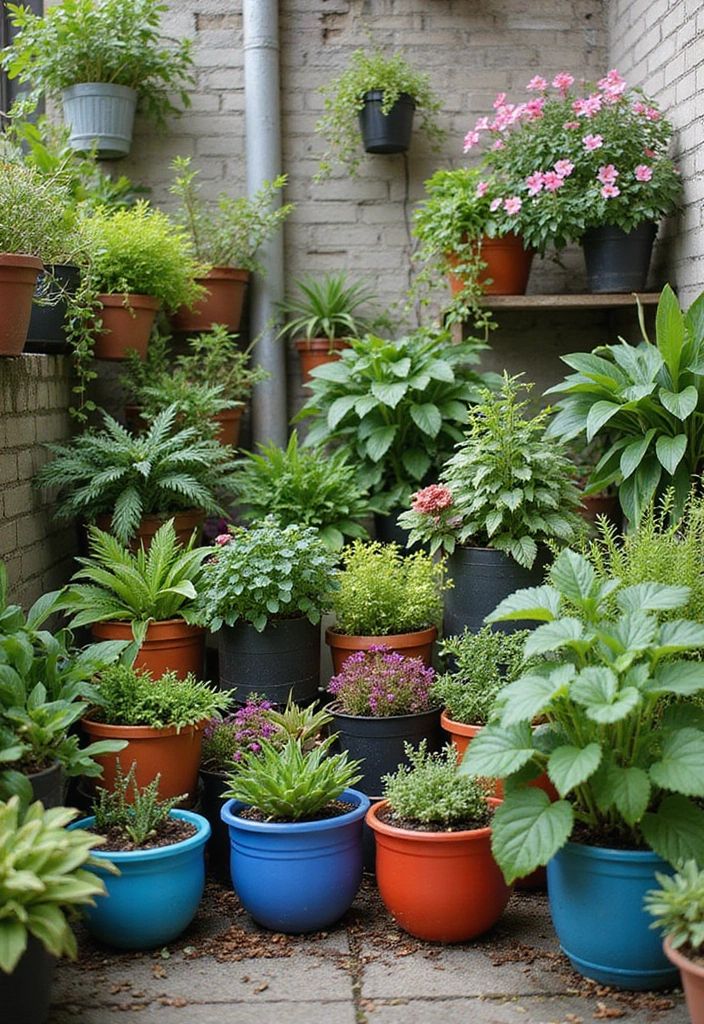
Container gardening is a fantastic solution for small urban gardens, allowing you to grow plants virtually anywhere.
Use various containers like pots, buckets, or even old wheelbarrows for a quirky touch.
This method provides flexibility in arranging plants and makes it easy to change your garden layout.
– Combine different sizes and heights for visual interest.
– Choose plants with similar sunlight and water needs.
– Consider wheeled containers for mobility.
Container gardens offer versatility, creativity, and the opportunity to maximize your gardening potential, regardless of available space.
20. Mosaic Pathways: Artistic Approach
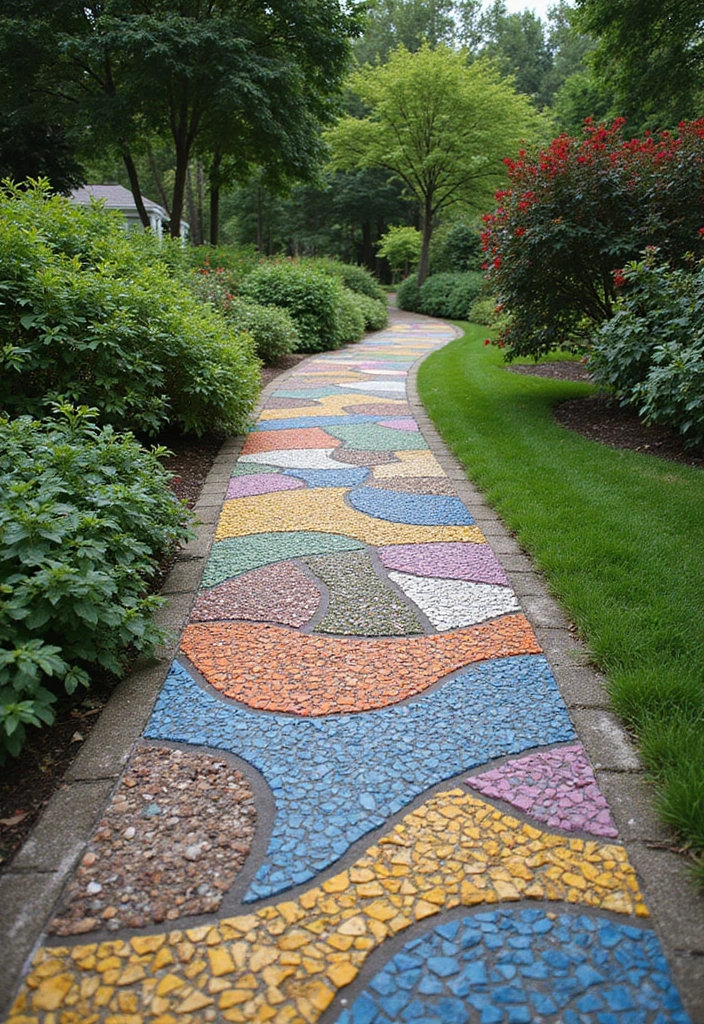
Why not turn your garden pathways into works of art? Using mosaic tiles or stones can create stunning designs that enhance the beauty of your space.
You can use broken tiles, glass, or stones to create a unique and colorful path.
This method allows for personal expression while also being practical.
– Plan your design before starting to ensure it flows well.
– Use weather-resistant materials to withstand the elements.
– Consider contrasting colors for a more dynamic look.
Mosaic pathways can add a splash of creativity and personality to your gardening experience.
21. Succulent Displays: Low Maintenance Wonders
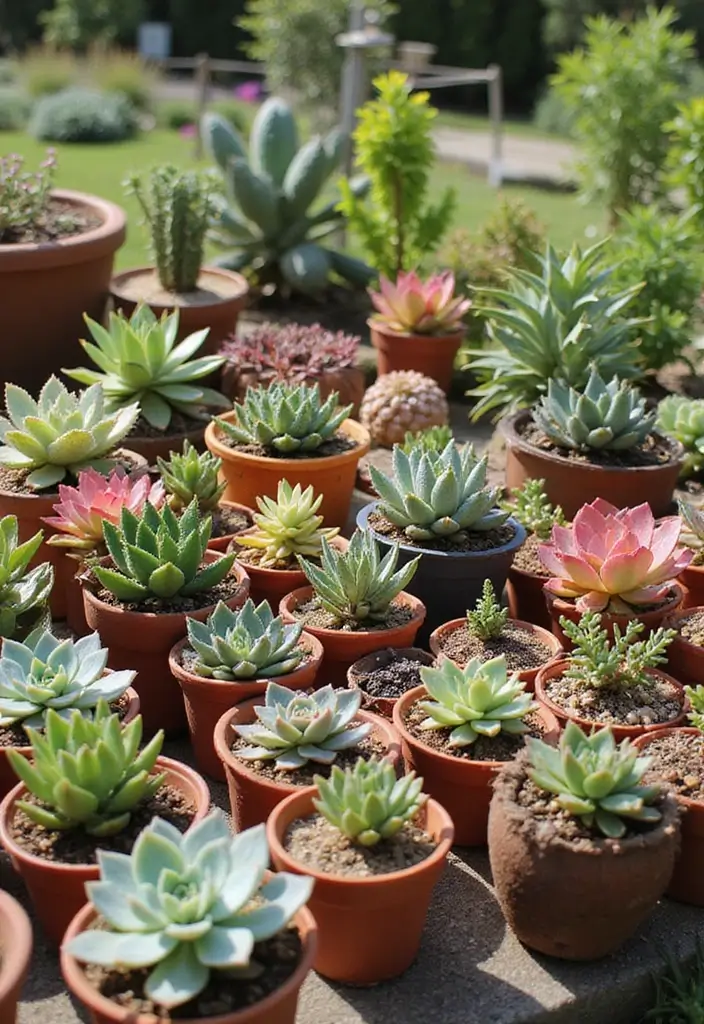
Succulents have become increasingly popular for their unique shapes and low maintenance needs.
Create stunning arrangements in pots or terrariums that add texture to your garden.
Their diverse colors and forms can be mixed and matched to create captivating displays.
– Use a well-draining soil mix specific to succulents.
– Place in areas with adequate sunlight.
– Group similar types for cohesive looks.
Succulent displays can bring an easy-going vibe to your garden, allowing you to enjoy greenery without heavy upkeep.
22. Trellis Art: Functional Decor
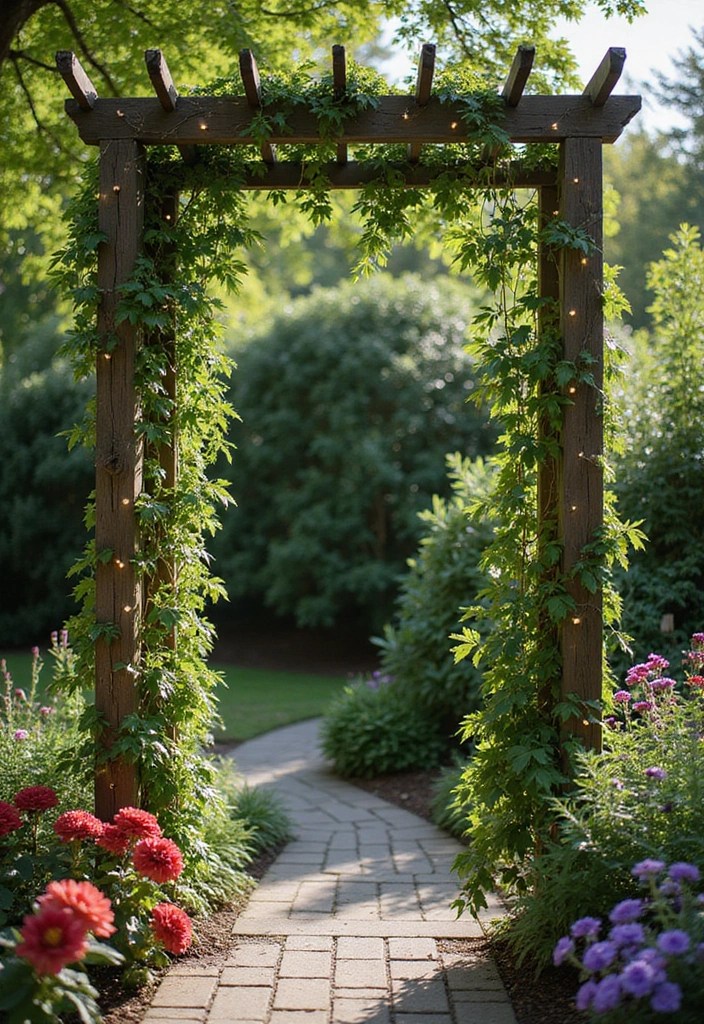
Trellises can serve a dual purpose in your garden by acting as both support for climbing plants and a decorative element.
Choose trellises that complement your garden’s style, whether rustic wood or sleek metal.
Climbing roses, wisteria, or even vegetables like peas can thrive on these structures.
– Position trellises where they can receive ample sunlight.
– Add decorative elements like lights or ornaments for added flair.
– Use them to create natural privacy screens.
Trellis art can enhance your garden’s beauty while providing necessary support for your favorite plants.
Elevate your outdoor space with trellis art! These functional decor pieces not only support climbing plants but also add a touch of elegance, making your garden a serene retreat. Garden magic starts with the right decor!
23. Themed Gardens: Curated Experiences
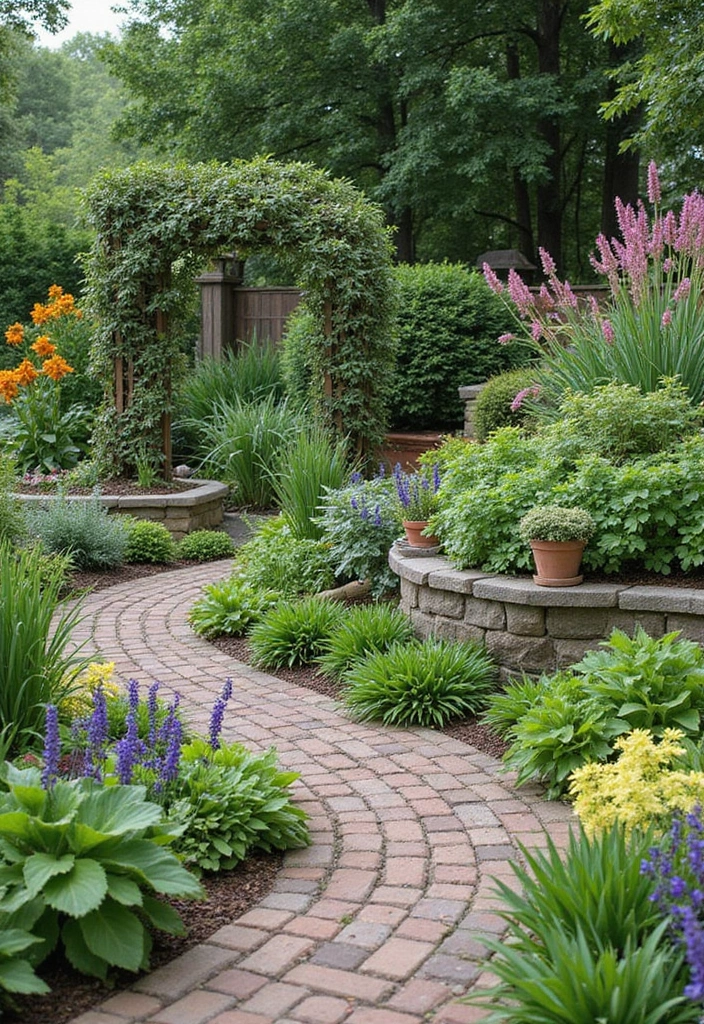
Creating a themed garden can transport you to another world.
Whether it’s a Mediterranean herb garden, a tropical paradise, or a native plant sanctuary, themes can add intrigue and purpose to your outdoor space.
Choose plants that align with your chosen theme, and use decor that complements it.
– Research plants that thrive together for best results.
– Incorporate themed decorations like statues or specific seating.
– Use color palettes that reflect the theme.
Themed gardens offer a curated experience that invites exploration and pleasure.
24. Vintage Decor: Nostalgic Charm
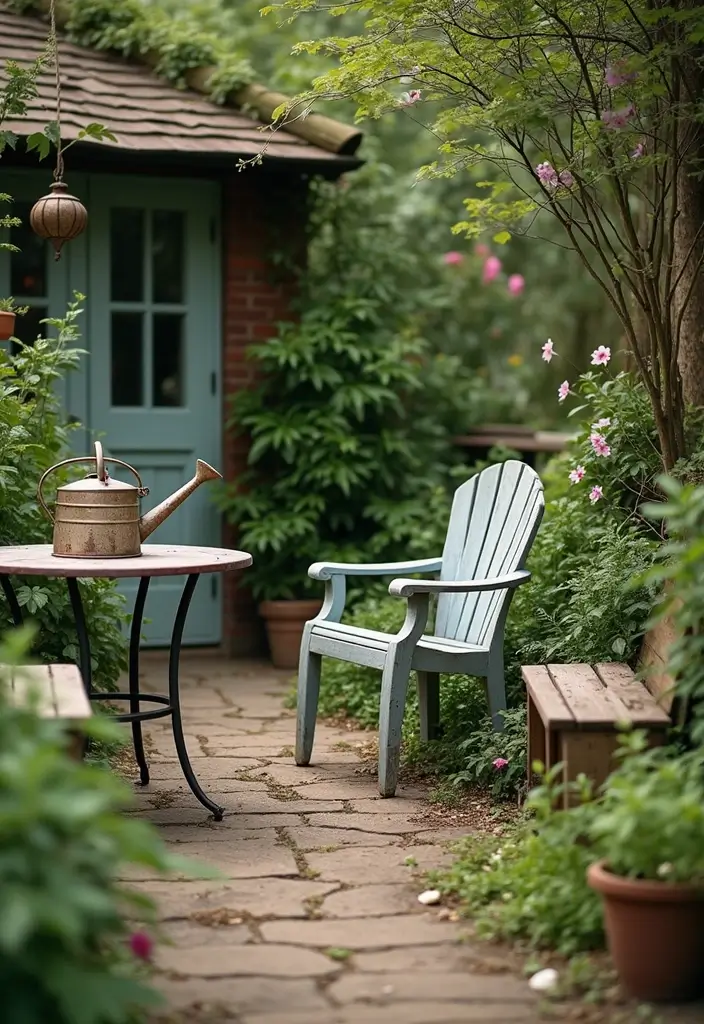
Incorporating vintage decor adds a unique charm to your garden.
Look for old watering cans, vintage signs, or antique furniture that can serve as both functional and decorative items.
These pieces tell a story and can evoke nostalgia, making your garden feel personal and authentic.
– Mix vintage with modern for an eclectic look.
– Restore old items for a fresh feel.
– Use vintage items to create focal points throughout the garden.
Vintage decor lends character and warmth, inviting you and your guests to linger a little longer.
25. Outdoor Rugs: Grounding Comfort
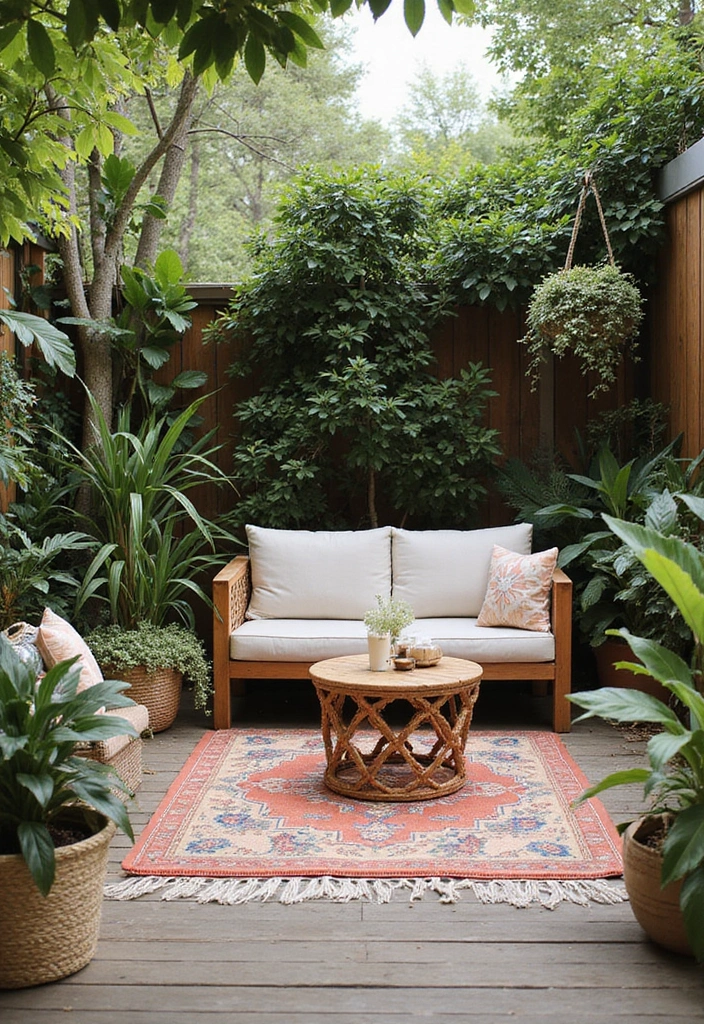
Adding outdoor rugs can make your garden feel like an extension of your living space.
These rugs can define seating areas and add color or patterns to your decor.
Choose durable, weather-resistant materials to ensure longevity while maintaining aesthetic appeal.
– Consider patterns that complement your plant colors.
– Use rugs to create cozy spots for relaxation or dining.
– Regularly clean to keep them looking fresh.
Outdoor rugs can bring a sense of comfort and style to your garden, making it a welcoming retreat.
26. Scented Pathways: Aromatic Adventures
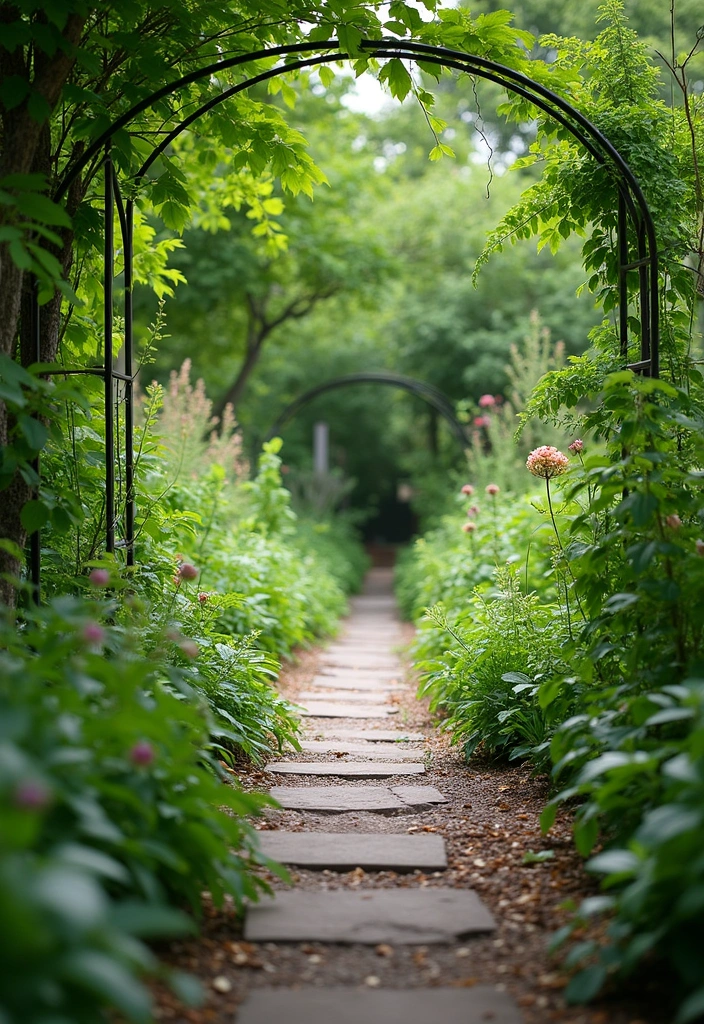
Creating scented pathways can guide visitors through your garden while offering delightful aromas.
Consider planting fragrant herbs or flowering plants along your walking path to enrich the experience.
As you stroll, the scents will change, inviting exploration and enjoyment of your garden.
– Use plants like lavender, mint, or jasmine for their strong scents.
– Position pots or plant beds strategically for maximum aroma.
– Incorporate signage to guide visitors to different scent zones.
Scented pathways not only add to your garden’s beauty but also create a unique sensory experience.
27. Urban Farming: Grow Your Own
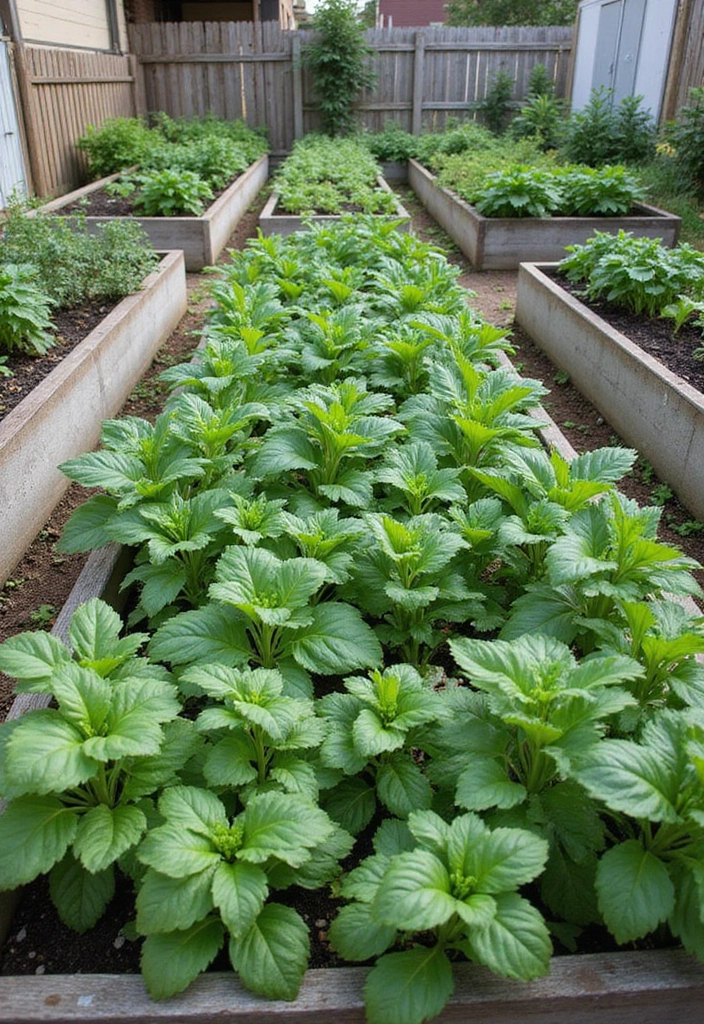
Urban farming is gaining momentum, allowing you to grow fresh produce right in your backyard, no matter how small.
Containers, raised beds, or vertical planters are excellent for cultivating vegetables, fruits, and herbs.
This not only promotes sustainability but also encourages a healthy lifestyle.
– Choose varieties that thrive in small spaces, like cherry tomatoes or herbs.
– Consider companion planting to maximize growth.
– Use compost to enrich the soil naturally.
Urban farming transforms your garden into a productive space while minimizing your carbon footprint.
Turn your tiny outdoor space into an urban farming paradise! With the right containers and companion planting, you can grow fresh herbs and veggies right at home. Embrace sustainability and enjoy the fruits of your labor!
28. Eco-Friendly Mulching: Nature’s Cover
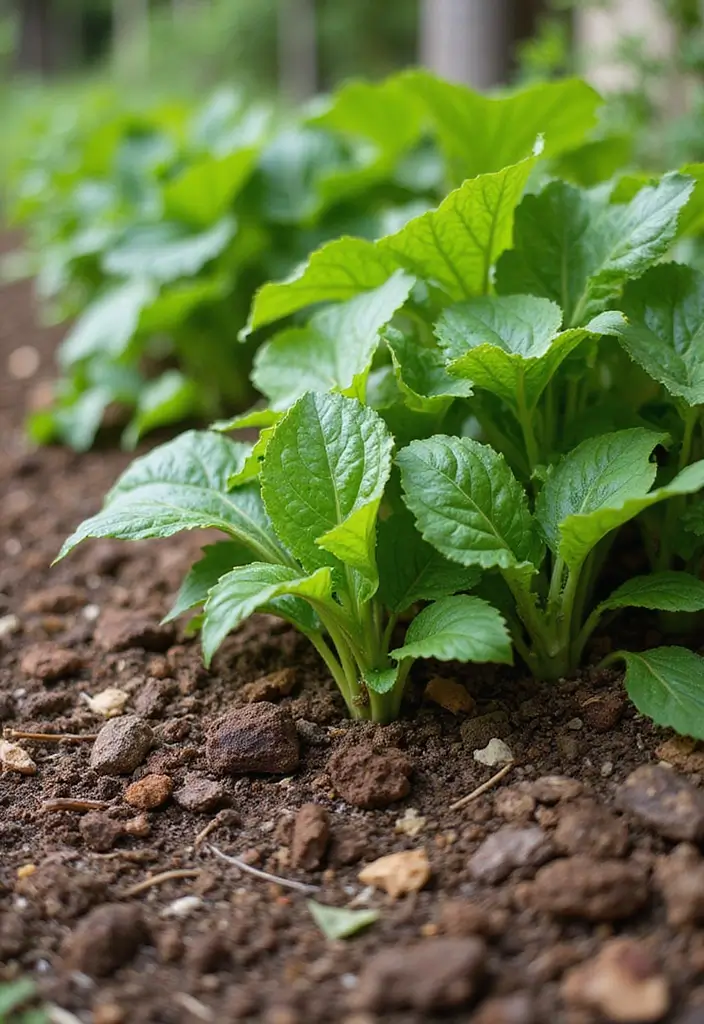
Using eco-friendly mulch in your garden can enhance its appearance while promoting soil health.
Choose organic materials like wood chips, straw, or grass clippings to provide nutrients as they decompose.
Mulching prevents weeds, retains moisture, and insulates plant roots.
– Apply a layer of 2-3 inches around plants.
– Ensure it stays clear from plant stems to prevent rot.
– Regularly top up as it breaks down.
Eco-friendly mulching not only enriches your garden’s health but also contributes to a sustainable gardening practice.
29. Community Gardens: Together We Grow
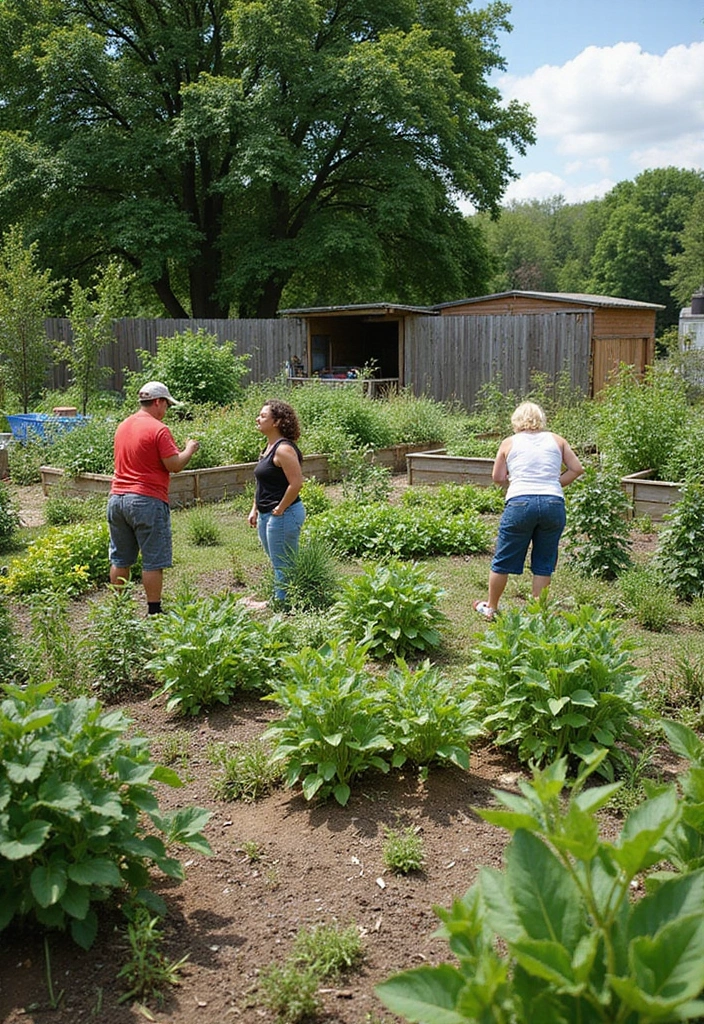
Joining a community garden can be a rewarding way to connect with neighbors while nurturing your love for plants.
These shared spaces allow you to grow your own produce, exchange gardening tips, and build friendships.
Community gardens often foster a sense of belonging and promote sustainability.
– Participate in planning and maintaining the garden.
– Attend workshops to learn from experienced gardeners.
– Share harvests to celebrate diversity and abundance.
Community gardens are a celebration of collaboration and the joys of gardening together.
30. Plant Swaps: Grow Together
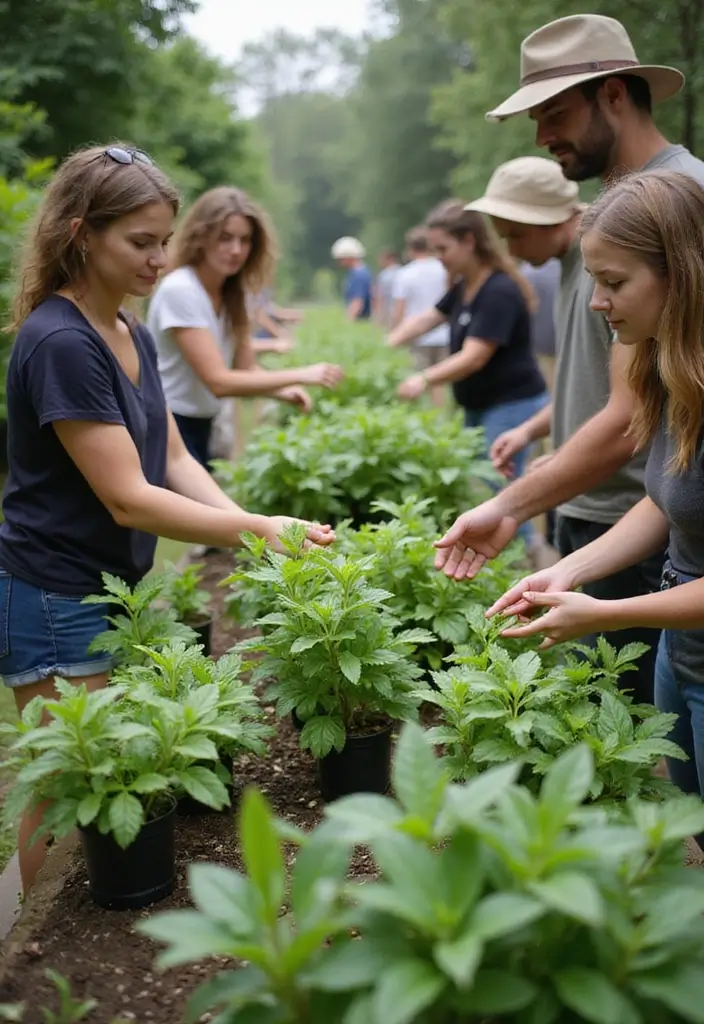
Participating in plant swaps can introduce new varieties to your garden while fostering community connections.
These events allow you to trade plants, cuttings, and gardening advice with fellow enthusiasts.
It’s a sustainable way to expand your garden without purchasing new plants.
– Host a swap at your home or find local events.
– Bring plants that are easy to propagate for better exchanges.
– Share tips and tricks with fellow plant lovers.
Plant swaps promote gardening knowledge and help you cultivate a diverse and thriving garden.
Conclusion: Cultivating Joy in Your Urban Oasis
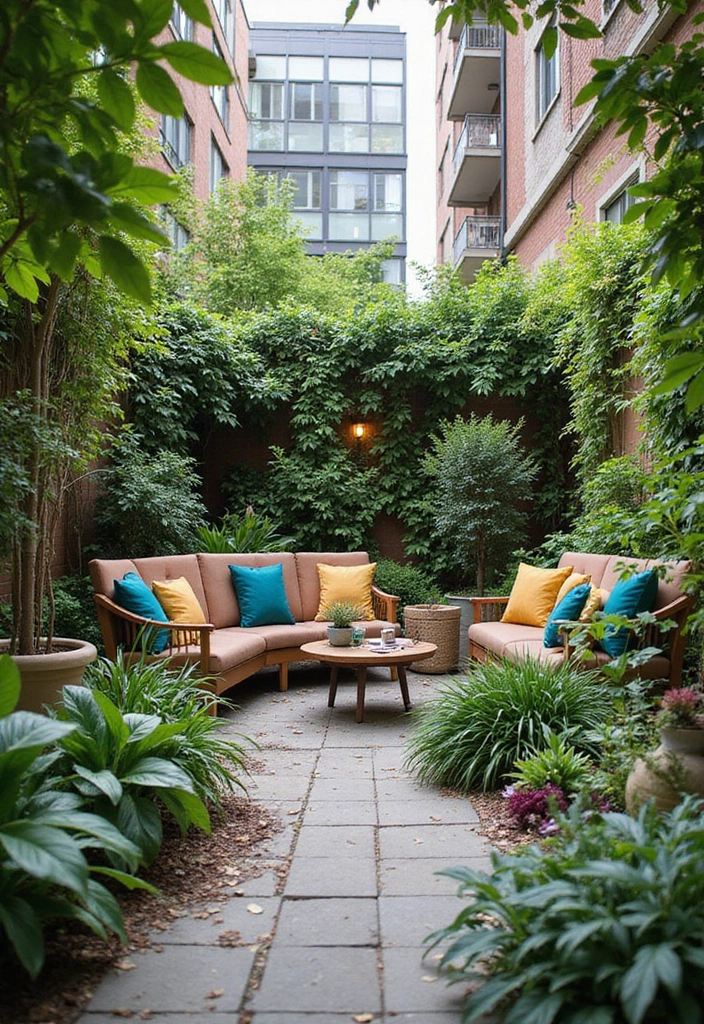
Filling your small urban garden with sustainable decor and creative plant styling can create a joyful sanctuary amidst the hustle and bustle of city life.
From vertical gardens to community involvement, the possibilities are endless!
Embrace your creativity and let your outdoor space reflect your personality and values.
Each of these ideas emphasizes the beauty of plants and the importance of sustainability, reminding us that even in small spaces, nature can thrive and bring us happiness.
Frequently Asked Questions
What are some sustainable outdoor plant decor ideas for small urban gardens?
Sustainability meets creativity in small urban gardens! You can explore ideas like vertical gardens, which save space while adding greenery, or use recycled planters made from old crates or tins to reduce waste. Hanging gardens and upcycled furniture also bring unique charm to your decor without requiring a large footprint. These eco-friendly options not only beautify your space but also promote a sustainable lifestyle.
How can I create a cozy outdoor living space in a small garden?
Creating a cozy outdoor living space is all about maximizing your existing area! Consider incorporating a garden bench for relaxation, or use outdoor rugs to define seating areas and add comfort. Fairy lights can enhance the ambiance, making your garden feel magical in the evening. Combine these elements with colorful pots and aromatic plants to create an inviting retreat right in your urban oasis.
What are some creative planter ideas for small gardens?
Get creative with your planters! You can use hanging planters made from repurposed items like mason jars or old baskets to save space and add character. Terrariums are another fun option, allowing you to create miniature gardens in glass containers. Don’t forget about using colorful pots—mixing sizes and shapes can really make your garden pop! These ideas not only look great but also reflect your personal style.
How can I incorporate wildlife-friendly plants into my urban garden?
Enhancing your garden’s biodiversity is a fantastic way to support local wildlife! Plant native species that attract pollinators like bees and butterflies. Consider creating a wildlife garden with a mix of flowering plants, shrubs, and even small water features to provide habitat and nourishment. By choosing the right plants, you can create a vibrant ecosystem right outside your urban home!
What are the benefits of joining a community garden?
Joining a community garden offers a wealth of benefits! Not only can you grow your own fresh produce, but you’ll also connect with fellow gardening enthusiasts and share plant swaps for new varieties. Community gardens foster a sense of belonging and provide opportunities to learn from others, enhancing your gardening skills. Plus, it’s a wonderful way to contribute to local sustainability efforts while enjoying outdoor activities!

